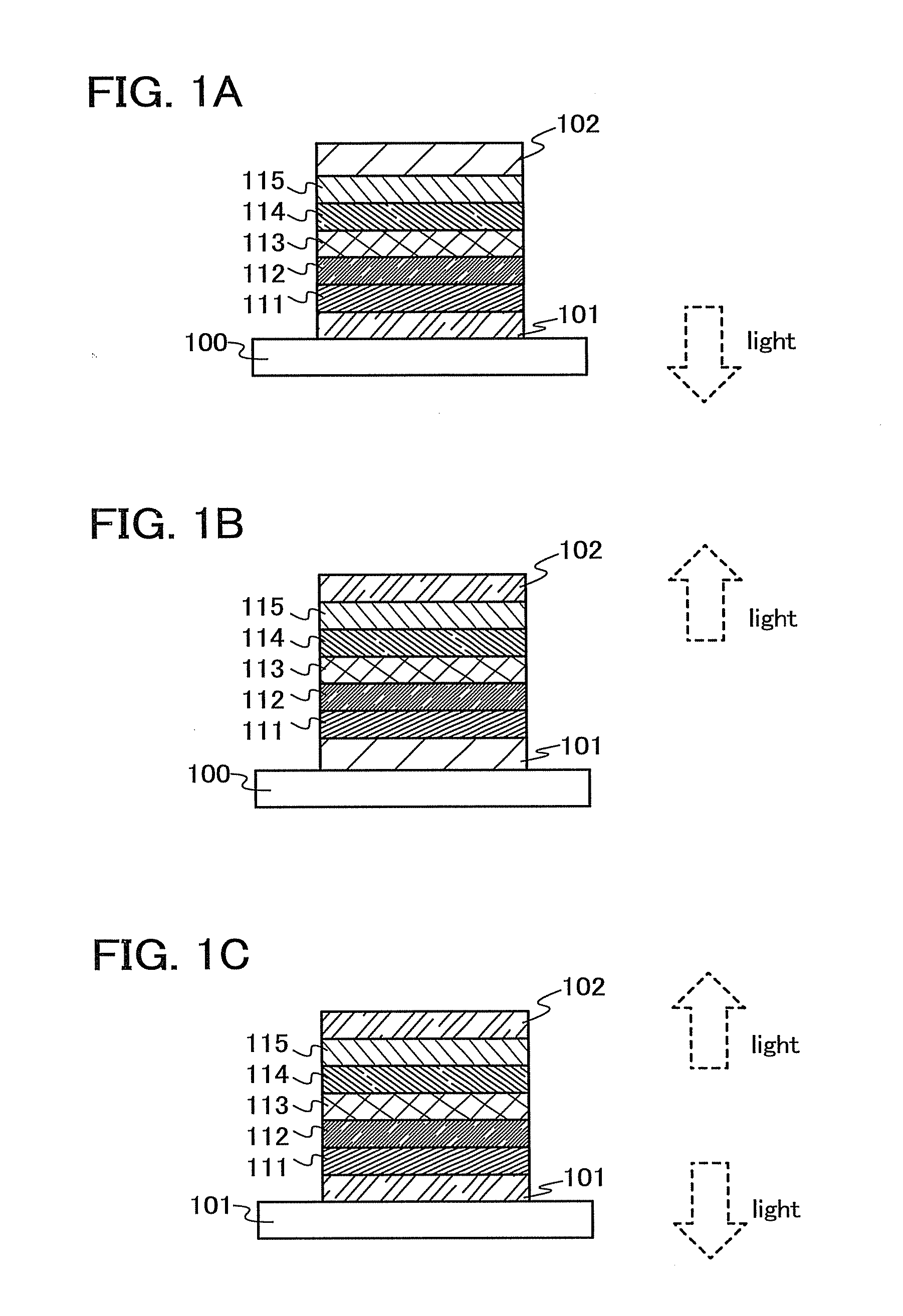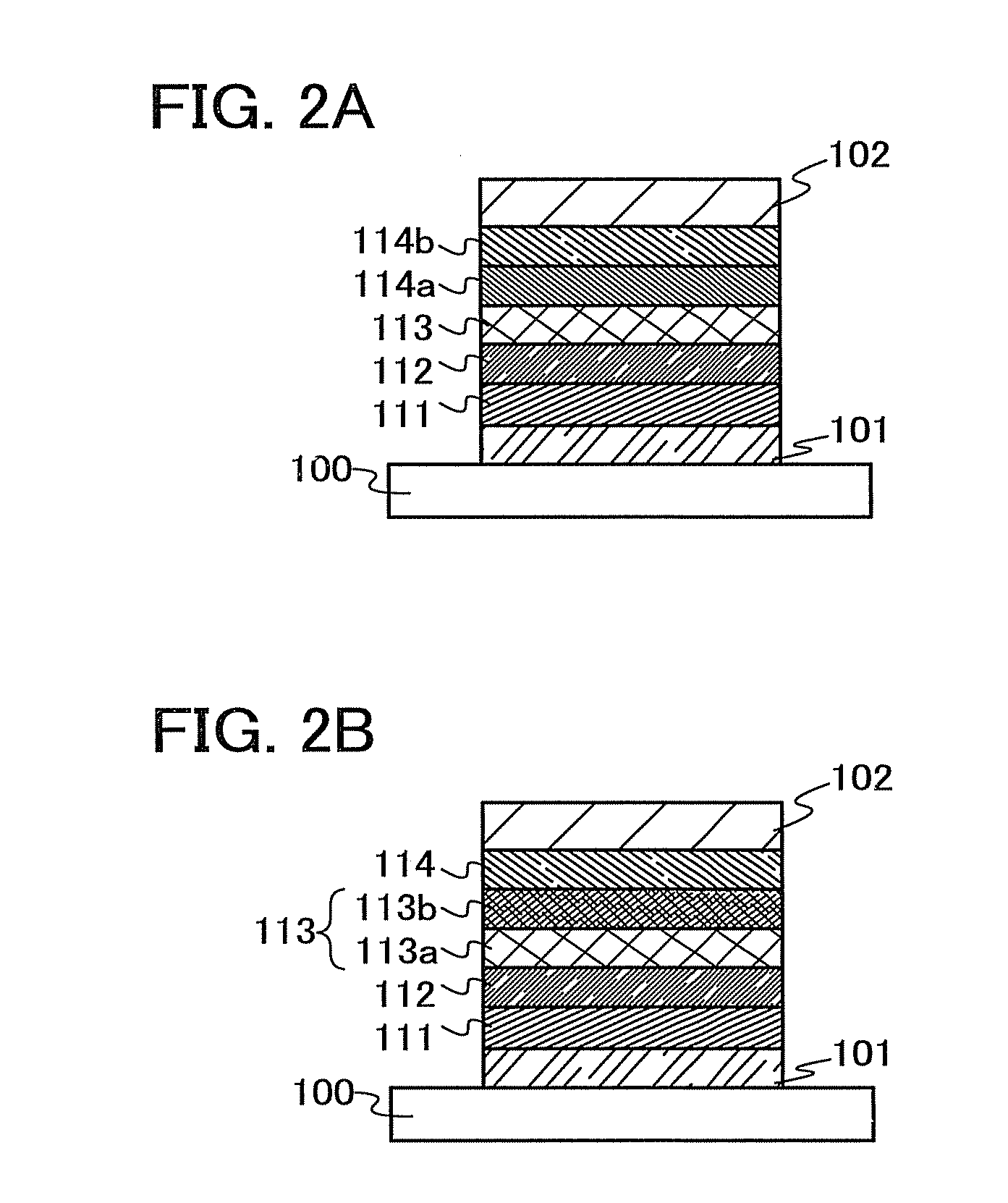Carbazole Derivative with Heteroaromatic Ring, and Light-Emitting Element, Light-Emitting Device, and Electronic Device Using Carbazole Derivative with Heteroaromatic Ring
- Summary
- Abstract
- Description
- Claims
- Application Information
AI Technical Summary
Benefits of technology
Problems solved by technology
Method used
Image
Examples
embodiment 1
This embodiment explains a carbazole derivative having a heteroaromatic ring of an embodiment of the present invention.
The general formula (G1) of the carbazole derivative having the heteroaromatic ring of the present embodiment is shown below.
(In the formula, Q is a substituent represented by the general formula Q1 or Q2; Ar1 to Ar3 each are an aryl group having 6 to 10 carbon atoms in a ring; and the aryl group optionally has a substituent. R28 to R31 each are a hydrogen atom or an alkyl group having 1 to 4 carbon atoms. R11 to R15 and R21 to R27 each are a hydrogen atom, an alkyl group having 1 to 4 carbon atoms, or an aryl group having 6 to 10 carbon atoms which form a ring, and the aryl group optionally has a substituent. Note that the carbon at the α position and the carbon at the β position may be directly bonded to each other to form a carbazole ring.) Introduction of the alkyl group improves the solubility of the carbazole derivative having the heteroaromatic ring of an emb...
embodiment 2
In the present embodiment, a light-emitting element will be described with reference to FIGS. 1A to 1C, in which the carbazole derivative having the heteroaromatic ring of an embodiment of the present invention is used as a host material of a phosphorescent compound.
FIGS. 1A to 1C each illustrate a light-emitting element including a light-emitting layer 113 between a first electrode 101 and a second electrode 102. The light-emitting layer 113 includes, as the host material, the carbazole derivative having the heteroaromatic ring exemplified in the aforementioned Embodiment 1.
To the light-emitting element explained in the present embodiment, voltage is applied using the first electrode 101 and the second electrode 102 as an anode and a cathode, respectively. The holes injected from the first electrode 101 and the electrons injected from the second electrode 102 are transported to the light-emitting layer 113 including the carbazole derivative having the heteroaromatic ring. The holes...
embodiment 3
In this embodiment, a light-emitting element having a structure different from those described in Embodiment 2 is described with reference to FIGS. 2A and 2B.
A structure is illustrated in FIG. 2A in which a layer 114a controlling transport of electron carriers is provided between the light-emitting layer 113 and an electron-transporting layer 114b. In the light-emitting layer 113, the carbazole derivative having the heteroaromatic ring of an embodiment of the present invention is used as a host material, and a light-emitting substance is dispersed therein. The layer 114a controlling transport of electron carriers is a layer in which a small amount of a substance having a high electron-trapping property is added to the material with a high electron-transporting property which forms the electron-transporting layer as exemplified in Embodiment 2. Alternatively, it is a layer in which a material having a low LUMO level and a hole-transporting property is added to a material having a hig...
PUM
| Property | Measurement | Unit |
|---|---|---|
| Phosphorescence quantum yield | aaaaa | aaaaa |
Abstract
Description
Claims
Application Information
 Login to View More
Login to View More - R&D
- Intellectual Property
- Life Sciences
- Materials
- Tech Scout
- Unparalleled Data Quality
- Higher Quality Content
- 60% Fewer Hallucinations
Browse by: Latest US Patents, China's latest patents, Technical Efficacy Thesaurus, Application Domain, Technology Topic, Popular Technical Reports.
© 2025 PatSnap. All rights reserved.Legal|Privacy policy|Modern Slavery Act Transparency Statement|Sitemap|About US| Contact US: help@patsnap.com



